Axonal transport of autophagosomes is regulated by dynein activators JIP3/JIP4 and ARF/RAB GTPases
- PMID: 37909920
- PMCID: PMC10620608
- DOI: 10.1083/jcb.202301084
Axonal transport of autophagosomes is regulated by dynein activators JIP3/JIP4 and ARF/RAB GTPases
Abstract
Neuronal autophagosomes form and engulf cargos at presynaptic sites in the axon and are then transported to the soma to recycle their cargo. Autophagic vacuoles (AVs) mature en route via fusion with lysosomes to become degradatively competent organelles; transport is driven by the microtubule motor protein cytoplasmic dynein, with motor activity regulated by a sequential series of adaptors. Using lysate-based single-molecule motility assays and live-cell imaging in primary neurons, we show that JNK-interacting proteins 3 (JIP3) and 4 (JIP4) are activating adaptors for dynein that are regulated on autophagosomes and lysosomes by the small GTPases ARF6 and RAB10. GTP-bound ARF6 promotes formation of the JIP3/4-dynein-dynactin complex. Either knockdown or overexpression of RAB10 stalls transport, suggesting that this GTPase is also required to coordinate the opposing activities of bound dynein and kinesin motors. These findings highlight the complex coordination of motor regulation during organelle transport in neurons.
© 2023 Cason and Holzbaur.
Conflict of interest statement
Disclosures: The authors declare no competing interests exist.
Figures
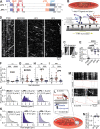
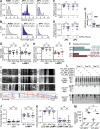
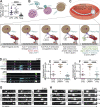
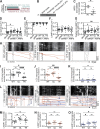
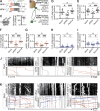
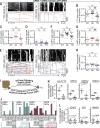
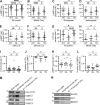
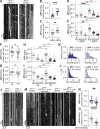
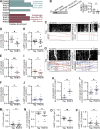
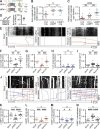
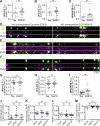

Update of
-
Axonal transport of autophagosomes is regulated by dynein activators JIP3/JIP4 and ARF/RAB GTPases.bioRxiv [Preprint]. 2023 Jan 29:2023.01.28.526044. doi: 10.1101/2023.01.28.526044. bioRxiv. 2023. Update in: J Cell Biol. 2023 Dec 4;222(12):e202301084. doi: 10.1083/jcb.202301084. PMID: 36747648 Free PMC article. Updated. Preprint.
Similar articles
-
Axonal transport of autophagosomes is regulated by dynein activators JIP3/JIP4 and ARF/RAB GTPases.bioRxiv [Preprint]. 2023 Jan 29:2023.01.28.526044. doi: 10.1101/2023.01.28.526044. bioRxiv. 2023. Update in: J Cell Biol. 2023 Dec 4;222(12):e202301084. doi: 10.1083/jcb.202301084. PMID: 36747648 Free PMC article. Updated. Preprint.
-
Sequential dynein effectors regulate axonal autophagosome motility in a maturation-dependent pathway.J Cell Biol. 2021 Jul 5;220(7):e202010179. doi: 10.1083/jcb.202010179. Epub 2021 May 20. J Cell Biol. 2021. PMID: 34014261 Free PMC article.
-
Insights on UNC-104-dynein/dynactin interactions and their implications on axonal transport in Caenorhabditis elegans.J Neurosci Res. 2019 Feb;97(2):185-201. doi: 10.1002/jnr.24339. Epub 2018 Oct 12. J Neurosci Res. 2019. PMID: 30311677
-
Selective motor activation in organelle transport along axons.Nat Rev Mol Cell Biol. 2022 Nov;23(11):699-714. doi: 10.1038/s41580-022-00491-w. Epub 2022 May 30. Nat Rev Mol Cell Biol. 2022. PMID: 35637414 Review.
-
Role of dynein-dynactin complex, kinesins, motor adaptors, and their phosphorylation in dendritogenesis.J Neurochem. 2020 Oct;155(1):10-28. doi: 10.1111/jnc.15010. Epub 2020 Apr 12. J Neurochem. 2020. PMID: 32196676 Review.
Cited by
-
DENND6A links Arl8b to a Rab34/RILP/dynein complex, regulating lysosomal positioning and autophagy.Nat Commun. 2024 Jan 31;15(1):919. doi: 10.1038/s41467-024-44957-1. Nat Commun. 2024. PMID: 38296963 Free PMC article.
-
Molecular mechanism of dynein-dynactin complex assembly by LIS1.Science. 2024 Mar 29;383(6690):eadk8544. doi: 10.1126/science.adk8544. Epub 2024 Mar 29. Science. 2024. PMID: 38547289 Free PMC article.
-
Physiological roles of chloride ions in bodily and cellular functions.J Physiol Sci. 2023 Nov 15;73(1):31. doi: 10.1186/s12576-023-00889-x. J Physiol Sci. 2023. PMID: 37968609 Free PMC article. Review.
-
Aging Differentially Affects Axonal Autophagosome Formation and Maturation.Autophagy. 2023 Dec;19(12):3079-3095. doi: 10.1080/15548627.2023.2236485. Epub 2023 Jul 18. Autophagy. 2023. PMID: 37464898 Free PMC article.
-
Opposing actions of JIP4 and RILPL1 provide antagonistic motor force to dynamically regulate membrane reformation during lysosomal tubulation/sorting driven by LRRK2.bioRxiv [Preprint]. 2024 Apr 3:2024.04.02.587808. doi: 10.1101/2024.04.02.587808. bioRxiv. 2024. PMID: 38903076 Free PMC article. Preprint.
References
Publication types
MeSH terms
Substances
Grants and funding
LinkOut - more resources
Full Text Sources
Research Materials

